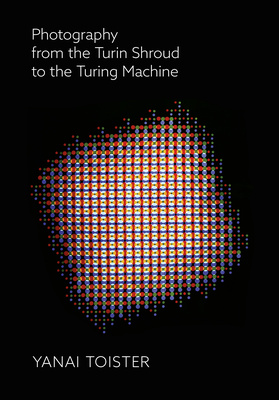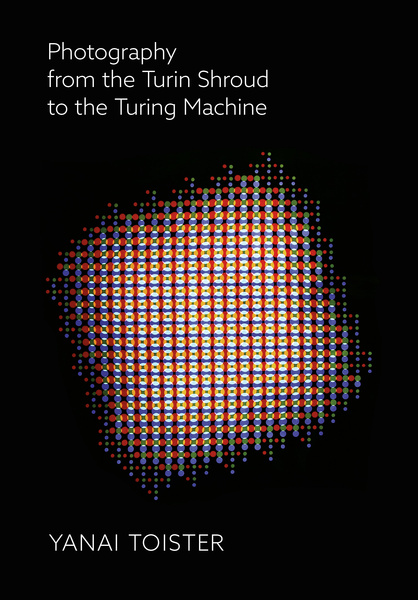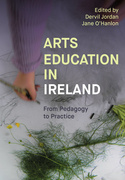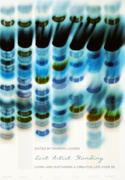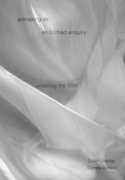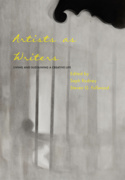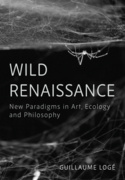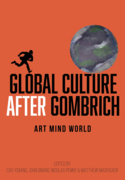Photography from the Turin Shroud to the Turing Machine (Book)
This book compares two conceptual models for theorizing about photography: the Turin Shroud and the universal Turing machine. It explores new propositions about the theory of photography; the concept of quasi-photography; a unique model for photography as algorithmic art; and an interface between philosophies of photography and media.
Edition
This book introduces two conceptual models of photography: the Turin Shroud and the universal Turing machine. The Turin Shroud inspires a discussion on photography’s frequently acclaimed ‘ontological privilege’, which has conditioned an understanding of photography as a sui generis breed of images wherein pictorial representation is coextensive with human vision. This is then contrasted with a discussion of the universal Turing machine, which integrates photography into a framework of media philosophy and algorithmic art. Here, photography becomes more than just the present-day sum of its depiction traditions, devices and dissemination networks. Rather, it is archetypical of multiple systems of abstraction and classification, and various other symbolic processes of transformation.
Yanai Toister (Ph.D.) is an artist, curator and educator. Toister serves as associate professor and director of the Unit for History and Philosophy at Shenkar College of Engineering, Design and Art in Tel Aviv. Toister’s artworks have been shown in numerous solo and group exhibitions (including Sandroni.Rey, Los Angeles; Dvir Gallery, Tel Aviv; Kunstahalle Luzern, Switzerland; Bolsky Gallery, Otis College of Art and Design, Los Angeles; Maison Europèenne de la Photographie, Paris; the 11th International Architecture Exhibition at the Venice Biennale; Kunstmuseen Krefeld, Haus Lange, Krefeld, Germany; Israel Museum). Toister’s writing has been published in various catalogues and journals (including Digital Creativity; Flusser Studies; journal of Visual Art practice; Journal of Science and Technology of the Arts; Philosophy of Photography; Photographies). Toister’s book Photography from the Turin Shroud to the Turing Machine has been published by Intellect/University of Chicago Press.
Introduction
1. The Nature of Photography
2. A Philosophy of Photography
3. Another Philosophy of Photography
4. The Landscapes of Code
5. Photography as Algorithmic Art
Conclusion
References
Index
'Toister presents a theory of photography that goes beyond the analog image into the realm of media arts and computation. Well versed in the literature of photography, Toister provides a good inroad to the topic, one with a unique spin. Basing his recalibration on the paradigm shift concept articulated by Thomas Kuhn (1922–96) in 1962 and the writings of the Czech-born media philosopher Vilém Flusser (1920–91), Toister articulates a 'photography-postphotography' theory of the medium. Dismissing the traditional emphasis on the unique sensibility of the photographer as protagonist, Toister considers extant histories of photography, e.g., Beaumont Newhall's, as a 'carefully constructed work of fiction' (p. 108). . . . Well documented and clearly argued, this book outlines a theoretical bridge between the image made of light and the image made of data, and presents a serious challenge to the rich and compelling history of the analog medium. . . . Recommended.'
'Toister’s exposition of his position is quite remarkable. The author’s ability to explicate ideas means that the trajectory is clearly marked out [...], the documentation is absolutely scrupulous, the examples given (including images) are entirely germane and the argument is skilfully presented.'
'While the contribution of this book to the field of photography theory/philosophy is clear, it is its contribution to the adjacent discipline of design theory which should be noted. The classic example would be the book’s contribution to the now well discussed debate between art history and visual culture. The book’s main thesis, alluding to the transition from pre-photography (the analogue world) to photography (the digital, algorithmic and computational) is highly innovative and could contribute to design-oriented disciplines. While still an emerging discipline, design theory often relies heavily on adjacent disciplines, such as visual or material culture. Crucially, this book could illuminate an interesting approach to research from our field.[...] Those that will pick up this volume will enjoy a plethora of disciplines, ideas, and points for reflection.'
'Vilém Flusser may be spinning in his grave—with glee. After a decade or more of the Brazilian Czech-born philosopher’s pioneering communication philosophies trickling into English translation and securing increased traction within media studies and digital theory, Yanai Toister’s Photography from the Turin Shroud to the Turing Machine skillfully explicates Flusser’s ideas about imagery. Toister nudges them further toward the forefront of contemporary thought about visual culture and, specifically, what photography has come to be and mean in the digital era. [...] More than just a whip-smart lit review, however, Toister pivots midway through to bind the trajectories of more recent theorists (Kittler, Manovich, and mainly Flusser) into a single toolkit for current and future discourse about the medium. Toister’s accomplishment in this compact argument is a steady, patient finesse in debunking old wisdom about photography’s elemental nature and reframing it not just as a complex technical system but as an inherently computational one.'

